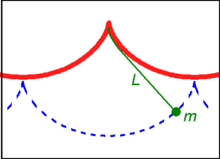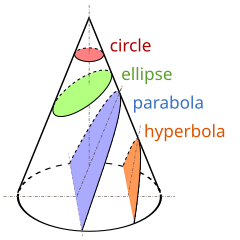
Back العلاقة بين الرياضيات والفيزياء Arabic ഗണിതവും ഭൗതികശാസ്ത്രവും തമ്മിലുള്ള ബന്ധം Malayalam Relação entre matemática e física Portuguese Mối quan hệ giữa toán học và vật lý Vietnamese


The relationship between mathematics and physics has been a subject of study of philosophers, mathematicians and physicists since antiquity, and more recently also by historians and educators.[2] Generally considered a relationship of great intimacy,[3] mathematics has been described as "an essential tool for physics"[4] and physics has been described as "a rich source of inspiration and insight in mathematics".[5]
In his work Physics, one of the topics treated by Aristotle is about how the study carried out by mathematicians differs from that carried out by physicists.[6] Considerations about mathematics being the language of nature can be found in the ideas of the Pythagoreans: the convictions that "Numbers rule the world" and "All is number",[7][8] and two millennia later were also expressed by Galileo Galilei: "The book of nature is written in the language of mathematics".[9][10]
- ^ Jed Z. Buchwald; Robert Fox (10 October 2013). The Oxford Handbook of the History of Physics. OUP Oxford. p. 128. ISBN 978-0-19-151019-9.
- ^ Uhden, Olaf; Karam, Ricardo; Pietrocola, Maurício; Pospiech, Gesche (20 October 2011). "Modelling Mathematical Reasoning in Physics Education". Science & Education. 21 (4): 485–506. Bibcode:2012Sc&Ed..21..485U. doi:10.1007/s11191-011-9396-6. S2CID 122869677.
- ^ Francis Bailly; Giuseppe Longo (2011). Mathematics and the Natural Sciences: The Physical Singularity of Life. World Scientific. p. 149. ISBN 978-1-84816-693-6.
- ^ Sanjay Moreshwar Wagh; Dilip Abasaheb Deshpande (27 September 2012). Essentials of Physics. PHI Learning Pvt. Ltd. p. 3. ISBN 978-81-203-4642-0.
- ^ Atiyah, Michael (1990). On the Work of Edward Witten (PDF). International Congress of Mathematicians. Japan. pp. 31–35. Archived from the original (PDF) on 2017-03-01.
- ^ Lear, Jonathan (1990). Aristotle: the desire to understand (Repr. ed.). Cambridge [u.a.]: Cambridge Univ. Press. p. 232. ISBN 9780521347624.
- ^ Gerard Assayag; Hans G. Feichtinger; José-Francisco Rodrigues (10 July 2002). Mathematics and Music: A Diderot Mathematical Forum. Springer. p. 216. ISBN 978-3-540-43727-7.
- ^ Al-Rasasi, Ibrahim (21 June 2004). "All is number" (PDF). King Fahd University of Petroleum and Minerals. Archived from the original (PDF) on 28 December 2014. Retrieved 13 June 2015.
- ^ Aharon Kantorovich (1 July 1993). Scientific Discovery: Logic and Tinkering. SUNY Press. p. 59. ISBN 978-0-7914-1478-1.
- ^ Kyle Forinash, William Rumsey, Chris Lang, Galileo's Mathematical Language of Nature Archived 2013-09-27 at the Wayback Machine.